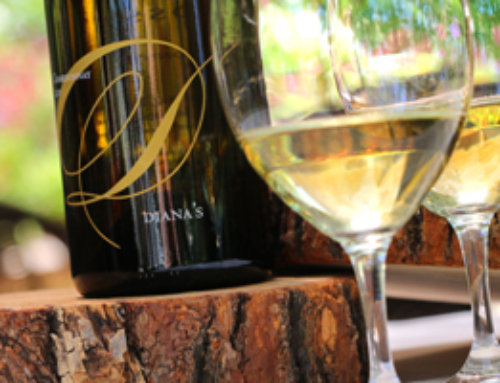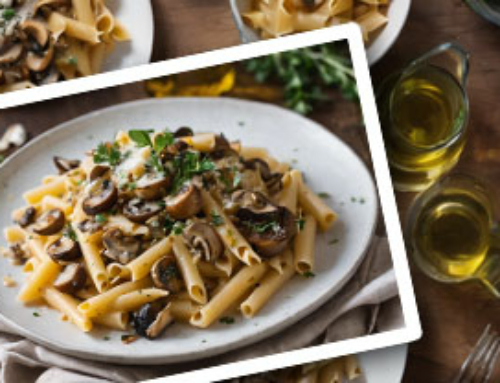Dungeness crab and spring couscous salad
peas, green onion, mushrooms and minty remoulade
Serves 4-6
INGREDIENTS
For the Couscous:
2 C Israeli Pearl Couscous
½ C Yellow Onion, Small (¼ in) Dice
1 tsp Black Pepper, fresh ground
1 tsp Coriander seed, fresh ground
¼ C Extra Virgin Olive Oil
For the salad
1 Lb Dungeness crab meat, Picked clean of all shells
2 C Fresh or Frozen shucked Peas
2 ea Green onions, sliced thin
1 ea Lemon zested and juiced
1 Lb Shimeji Mushrooms, or any other mushroom of your choice, cut into bite size pieces
For the Remoulade
2 ea Whole Eggs
¼ C Capers
1 ea garlic clove, chopped
1 Tbsp Dijon mustard
2 ea Lemons, zested and juiced
½ Bun Parsley leaves, rough chop
12 ea medium sized mint leaves, rough chop
3 Tbsp Kosher Salt
1 tsp Black pepper, fresh ground
1 C Vegetable oil of your choice
PROCEDURE
To start, make and chill the Israeli couscous
1. In a medium sized pot, heat olive oil to medium
2. Add onions with salt and saute until caramelized (5-7 minutes)
3. Add in couscous and continue to saute
4. Stir regularly, sauteing until couscous has turned a rich mahogany brown (about 10 minutes)
5. Add black pepper and coriander seed, stirring in thoroughly
6. Add in a quarter of the water carefully, making sure to scrape the bottom of the pan, watch out for the steam
7. Add in the rest of the water and bring to a simmer
8. Cover with a lid and reduce temperature to lowest setting
9. Cook for 10 minutes, or until water is absorbed and couscous is tender
10. Remove couscous from the pan into a metal bowl and drizzle in a little more extra virgin olive. This helps make sure the couscous doesn’t stick together.
11. Chill in your refrigerator
Next make the remoulade dressing
- Combine all the ingredients, except for the oil in your food processor
- Pulse until everything has turned into a paste then set to medium speed
- Allow the mixture to blend for at least 1 minute
- Next begin slowly drizzling in the oil to emulsify.
- Taste for seasoning and adjust to your liking with more acidity or salt
Next pan roast your mushrooms
- In a medium saute/fry pan heat about 2 Tbsp of an oil of your choosing to high
- Add in the chopped mushrooms, season with a pinch of salt
- Saute mushrooms for about 5-7 minutes or until golden brown and tender
- Set aside to cool at room temperature
Cook or defrost your peas
- If using frozen peas, simply soak the peas in cold water till defrosted, then drain the excess water
- For fresh peas, get a small pot of water boiling and season until it tastes like sea water
- Add in the raw pes and boil (aka Blanch) for 1 minute
- Strain from the cooking liquid and chill (shock) in cold water
- Once cool, strain from the water
Next double check your crab meat
- Wash your hands thoroughly
- Place the crab meat in something like a casserole pan to one side, and have a small container of water next to you
- Using your fingers incrementally sift through the crab meat to feel for shells, discard shells by dipping your hand with shells into the small container of water
- Shift the clean meat to the other side of your container
- Continue this process until you feel certain there are no more shells.
Finally, mix your salad!
- In a large bowl combine the following ingredients in the order listed: couscous, peas, sliced green onion, cooked mushrooms, and crab
- Mix together until well combined
- Next add in the remoulade, lemon zest and fresh lemon juice
- Mix thoroughly
- Allow the mix to marinate for at least 30 minutes before serving
- Serve chilled or at room temperature
- Store in the fridge for up to 4 days.
Alaskan Halibut en Papillote, Spring Baby Vegetables, Testarossa Chardonnay Sauce Fumet
Serves 4-6
4 lb Alaskan Halibut filet, no skin – you can substitute other white flaky fish, like branzino, seabass, ling cod, mahi etc., just be mindful that thinner fish will cook faster
4 Tbsp Kosher Salt
2 Tbsp fennel seed – ground/crushed
1 Tsp Black pepper, ground/crushed
2 ea green zucchini – slice ½ in rounds
2 ea yellow squash/zucchini – slice ½ in rounds
2 bun broccolini, trim 1 in off the base, cut into ⅓’s
1 pint cherry tomatoes, cut in half
6 ea Green Onions, trim roots and 1in off the tops, cut into 1in sized pieces
3 ea garlic cloves, sliced as thin as you can
1 bun Fresh Oregano
¼ C Extra Virgin Olive OIl
To Taste Kosher Salt
1 C Dry White Wine (always cook with wine you like to drink!)
1 C Fish/seafood Stock
1 stick Butter (about 4 oz), cut into 8
First blanch and season your vegetables
- Fill a medium sized pot with water and bring to a boil
- season until the water is a salty as seawater, this is your blanching water
- Get a second container filled with ice water, this is your shocking water to rapidly cool the vegetables
- Finally, get a tray lined with paper towels to dry your blanched and shocked vegetables
- Begin with the squash, first the yellow. Lower the squash into the boiling blanching and cook for 1 min.
- Using a slotted spoon or handled strainer, remove the yellow squash from the blanching liquid and directly into the ice bath (shocking liquid)
- Next blanch the zucchini. Place the zucchini into the boiling blanching liquid for 1 minute.
- Meantime, Remove the yellow squash from the ice bath onto your paper towels to drain
- Once the zucchini is ready, shock them in the ise bath as well
- Next cook the broccolini following the same method
- And last the green onions and garlic
- Once all your vegetables are dry, combine them in a bowl with the cherry tomatoes and oregano sprigs
- Season them with salt and just enough extra virgin olive oil to coat well
- Mix thoroughly and set aside
Next preheat your oven to 325*F
Meanwhile, have your fish out at room temperature.
Season the fish all around with salt, ground pepper and ground fennel seed
Drizzle with extra virgin olive oil
Allow to sit for about 30 min-1 hour before cooking
Assemble your cooking package (en papillote)
- Using a cookie sheet pan, large casserole pan, or roasting pan you will begin to build the cooking package
- There are a few options here: store bought ready made steaming packages which can be found in various home goods and grocery stores; parchment paper or aluminum foil
- If using the store bought skip the next couple steps
- For foil and/or parchment, you will want to use a double layer of either.
- Cut out a roughly 2 foot by 2 foot square
- Set the 2 sheets on top of one another on your cooking vessel (see step 1)
- Next crimp up all the sides to help create a bowl like shape
- Take your seasoned vegetable mix and lay out into the package
- Make sure everything is spread evenly
- Lay the seasoned fish directly on top of the vegetables in the center
- Take the butter cubes and scatter them around evenly ensuring you put at least 2 cubes on the fish as well
- Next pour in the wine and fish/seafood stock ensuring even dispirsment
- Take a couple of the oregano sprigs and set them atop the fish
- Finally begin to close up the package. Bring the corners together and fold them where they meet to create an airtight seal. Make sure the package creates almost a tent like structure above the fish so that there is minimal touching.
Lets Cook!
Finally, if it’s been at least 30 minutes since the fish has been out of the fridge you’re ready to cook “en papillote”. If not, allow the package to sit at room temp until the 30 minutes has passed. Bringing the fish to room temperature ensures even cooking which allows us to make sure the fish doesn’t dry out.
Place the vessel in your preheated oven (325*F)
Set a timer for 15-20 minutes. If using a thicker fish like alaskan halibut or cod lean towards 20 minutes, thinner fish will do better at 15 minutes
Once the timer has gone off, remove the vessel from the oven and allow to rest for 5 minutes before opening
To present, use a pair of kitchen shears to cut a square/oval opening from the top of the package
Gently remove the top you’ve cut to present to your guests
Serve! Make sure everyone gets a little bit of everything and spoon the sauce from underneath over the fish and vegetables.
Seared Scallop n’duja spiced pork vinaigrette, marinated fresh fava beans
About 12-16 cookies
For The Scallops
2 # Fresh Scallops 10/20s – seared
1 C Sherry Vinegar – the best you can find
2 oz N’duja – you can get this at whole foods or italian specialty markets
3 Tbsp vegetable oil
For The Marinated Fava Beans
2 # Fava Beans, shucked, blanched and peeled, or defrosted pre-peeled
2 ea Lemons, zested and juiced
3 Tbsp Sumac
1 Tbsp Paprika
2 ea Garlic cloves, grated
2 ea Shallots – sliced as thin as possible
¼ C Extra Virgin Olive Oil
To Taste Salt
Start the day before you want to serve by marinating the fava beans
Combine All fava bean ingredients in a mixing bowl
Mix thoroughly
Season with salt and taste. May need more lemon juice or salt depending on your liking
Marinade for at least 24 hours
Next pull the fava beans from the fridge
set at room temperature 1 hour before ready to serve
Taste and adjust seasoning to your liking
Lay the fava beans in the serving container of your choice
Next cook and serve the scallops (this happens fast so read carefully and be prepared)
Get a large wide pan as hot as you can manage
Add vegetable oil to the pan, enough to coat the bottom
When it begins to smoke smoke carefully lay the scallops flat side down
Reduce temperature to medium and allow them to sear. Do not touch or move them or they will stick to the pan.
When you start to see the edges of the scallops turn a light brown add in the N’duja and sherry vinegar. Careful lots of steam will happen!
Flip the scallops immediately and stir the sauce, spooning the sauce as it comes together all over the scallops, glazing them
Once all the scallops are flipped, allow the sauce to come together for about 30 more seconds
Take the pan off the heat and pour the scallops with sauce all over the fava beans
Serve immediately with a drizzle of extra virgin olive oil and a pinch of finishing salt on each scallop (Maldon, fleur de sel, Himalayan pink salt etc.)





